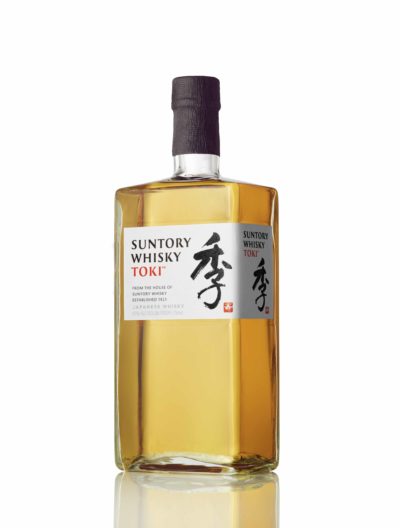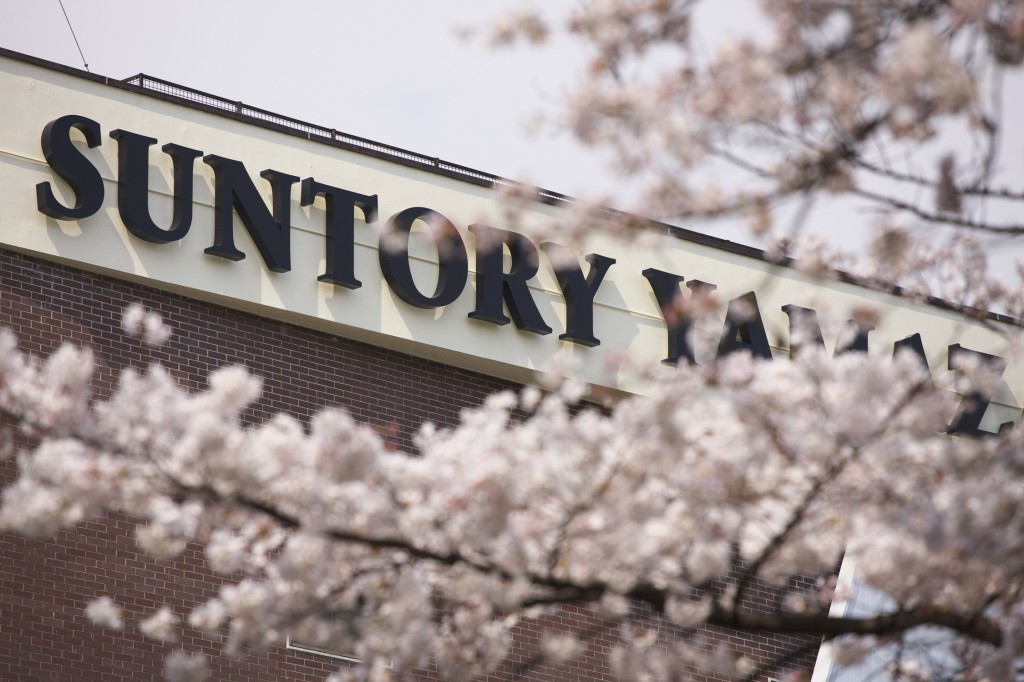
(Courtesy: Suntory Whisky)
Their Japanese whisky line up includes names like Yamazaki, Hakushu, and Hibiki. You may have heard that Yamazaki was named the best whisky in the world by Jim Murray in his Whisky Bible 2015 (specifically, the Yamazaki Single Malt Sherry Cask 2013). They got the chops.
So what’s Toki? It means “time” in Japanese and it’s another entrant into the blend category, to join Hibiki. Yamazaki and Hakushu are single malts from those respective distilleries. Suntory also owns Chita, a single grain whisky, but you won’t find that in the United States. All three are blended to make Toki.
Toki Tasting Notes
Visually, Toki is a light gold color. It doesn’t have a lot of body as you swirl it in the glass (I enjoyed it in a Glencairn).
The nose is nice and delicate, perhaps I’m influenced by the color, but hints of granny smith apples and honey.
The palate continues the theme of lightness, makes me feel like I’m sipping an Irish whisky (triple distilled), with a bit of honey and vanilla.
Finish is there, a bit of heat at the end (43% abv, so not higher than average), and it doesn’t linger long.
Overall
It’s well done and an affordable dram coming at around $40 for a 750mL bottle. It’s one you could drink all night long and not get sick of it but it’s very delicate, nothing jumps out at you about its flavor or nose.
I’ve seen a bunch of places suggest you use it in a highball cocktail, myself included, and I think it truly shines in that role. Much like gin and tonics featuring Hendrick’s gin and its complex botanicals, the honeys, vanillas, and green apple of Toki plays a big role in highballs (which is just whisky and club soda).

 We all know that scotch is whisky made in Scotland but one of the most celebrated whisky distillers outside of Scotland has always been Suntory. If you are a friend of scotch, chances are you’ve heard of Suntory as well and it should come as no surprise that this year will be the 90th year they’ve been distilling whisky. While technically not scotch, since it’s produced in Japan, it’s still regarded as one of the best.
We all know that scotch is whisky made in Scotland but one of the most celebrated whisky distillers outside of Scotland has always been Suntory. If you are a friend of scotch, chances are you’ve heard of Suntory as well and it should come as no surprise that this year will be the 90th year they’ve been distilling whisky. While technically not scotch, since it’s produced in Japan, it’s still regarded as one of the best. Tonight, my friends and I are going to have one of our much anticipated “scotch nights,” where we each bring a bottle to share with the group. I’ve long had my eye on the
Tonight, my friends and I are going to have one of our much anticipated “scotch nights,” where we each bring a bottle to share with the group. I’ve long had my eye on the